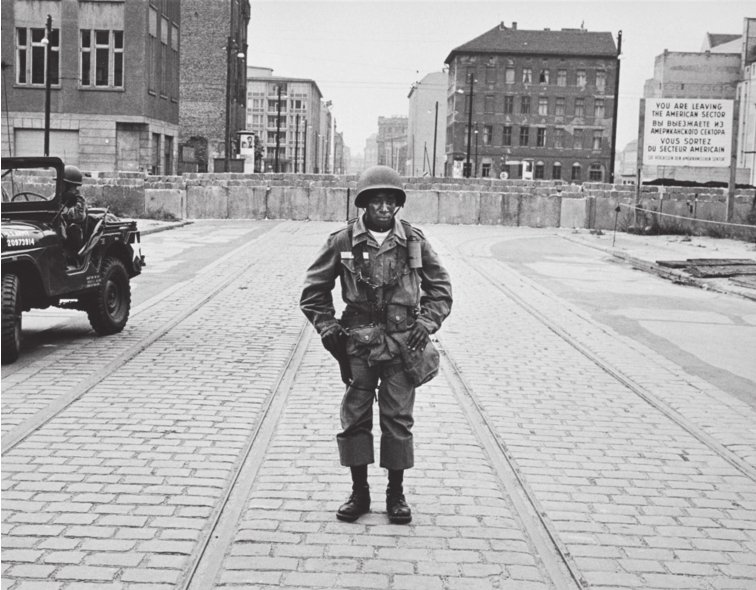
Some photographers go for the iconic image that sums up war, poverty, work or some other big piece of life. Others look for shadows and shades of the inexpressible.
Photographer Leonard Freed did both.
His eye and heart worked together to create images that change the way you look at life.
A woman is arrested at a civil rights demonstration. The arresting officer is holding the woman’s hand, and the woman’s hand is holding a Bible. It’s a sight that, once seen, is impossible to shake off.
“Black in White America,” a compelling selection of 35 Freed prints at Old Town’s MICA Gallery, will be on view Aug. 23 at 6 p.m., accompanied by a talk from Helen Mickens, the first African-American woman to be president of Lansing Rotary. The exhibit can also be seen by appointment and will be open during Michigan BluesFest, Sept. 21-22.
Freed, who died in 2006, was on the scene for many of the most critical setbacks and celebrations of the Civil Rights movement, which he chronicled with gripping immediacy. A panoramic photo of the 1963 March on Washington is overflowing with granular detail, from the signs held by thousands of demonstrators to the telephones on the bustling press tables in the foreground.
But Freed took just as much care to track the never-ending beats of everyday life — weddings, funerals, people slogging to work.
Several photographs labeled “Signs of the Time in the South” show people walking in or out of facilities marked for “white” or “colored.” This relatively recent abomination stuns today’s viewer, like Roman gladiatorial conquests or Mayan human sacrifice, but the people in the photos, black or white, appear long used to it, making it all the more horrifying.
Civil rights struggles of the 1960s dominate the exhibit, including sadly familiar images of protesters confronting arrest and violence. But Freed is less interested in the big explosions of America’s race wars than he is in the spiritual shrapnel those wars sent into countless streets and homes, inflicting lifelong pain and insolation.
In several group photos, the viewer will discover one black face that’s reacting to a completely different set of signals than the faces around it. A woman shopping in downtown New Orleans is part of a typical sunny afternoon, but she looks almost terrified as the oblivious white folks bustle around her. In a photograph of a string band in full swing, the white men in the foreground are happily lost in the tune they are playing, while a black woman playing guitar behind them wears a look of haunting sadness.
Freed’s starkest image of isolation is a photograph of a black soldier on duty at Berlin Wall dividing East and West Berlin. The soldier inspired Freed to create this set of images, according to the 1968 book chronicling his work, available for perusal at the MICA Gallery exhibit. Freed saw a deep irony that the soldier, and others like him, were defending the nation abroad while so many injustices afflicted their homeland.
Students of composition, lighting and other niceties of photography will find as much to chew on at this exhibit as students of the civil rights movement.
Freed's empathic heart and precise eye achieve perfect fusion in “Children’s Camp, Upstate New York.” A bored boy at summer camp sits at a table, hemmed in by static, criss-crossing lines: a totem pole and two trees on the vertical, the tabletop and two logs on the horizontal. Even the boy’s arms, dangling straight down in ennui, seem to obey Freed’s strict composition, as regimented as summer camp itself.
The stacked, diagonal boxes in “Delivery Boys in New York” similarly dominate the lives of the humans hauling them around.
One of Freed’s most effective images shows street artists at work in Greenwich Village. In the foreground, invisible lines of force energize a triangle of mutually interacting faces: the pensive sitter, the objective, working artist and the half-finished portrait, a hybrid product of both sitter and artist.
Freed had a rare ability to pack aesthetic interest into his images without falling into the trap of aestheticizing suffering. “Living in Johns Island, S. Carolina” is a study in contrasting blocks of texture as much as it is of rural poverty, juxtaposing a collapsed metal roof with the back of a woman in a bathrobe and a pile of brush.
In “Bible Meeting, Johns Island, S. Carolina,” two private, ecstatic faces, eyes hidden from view, are glimpsed through a window grating in a matrix of blinding light.
Freed didn’t trade in the obvious. The longer you look at a Freed photograph, the more life you find. In an image of the Rev. Martin Luther King Jr. greeting well-wishers in a motorcade a guard is looking over his shoulder, away from the jubilation, toward some yet unseen threat from a sniper.
In several images of civil rights marches, the faces of the marchers are caught in the seemingly random expression of a fleeting moment. They are neither angry, nor tired, nor righteous. They are doors to long hallways of experience the photographer can only hint at.
Leonard Freed Black in White
America MICA Gallery 1210 Turner St., Lansing Open BluesFest (Sept. 21-22) and by appointment (517) 371-4600 Meet Helen Mickens 6 p.m. Thursday, Aug. 23
Support City Pulse - Donate Today!
Comments
No comments on this item Please log in to comment by clicking here